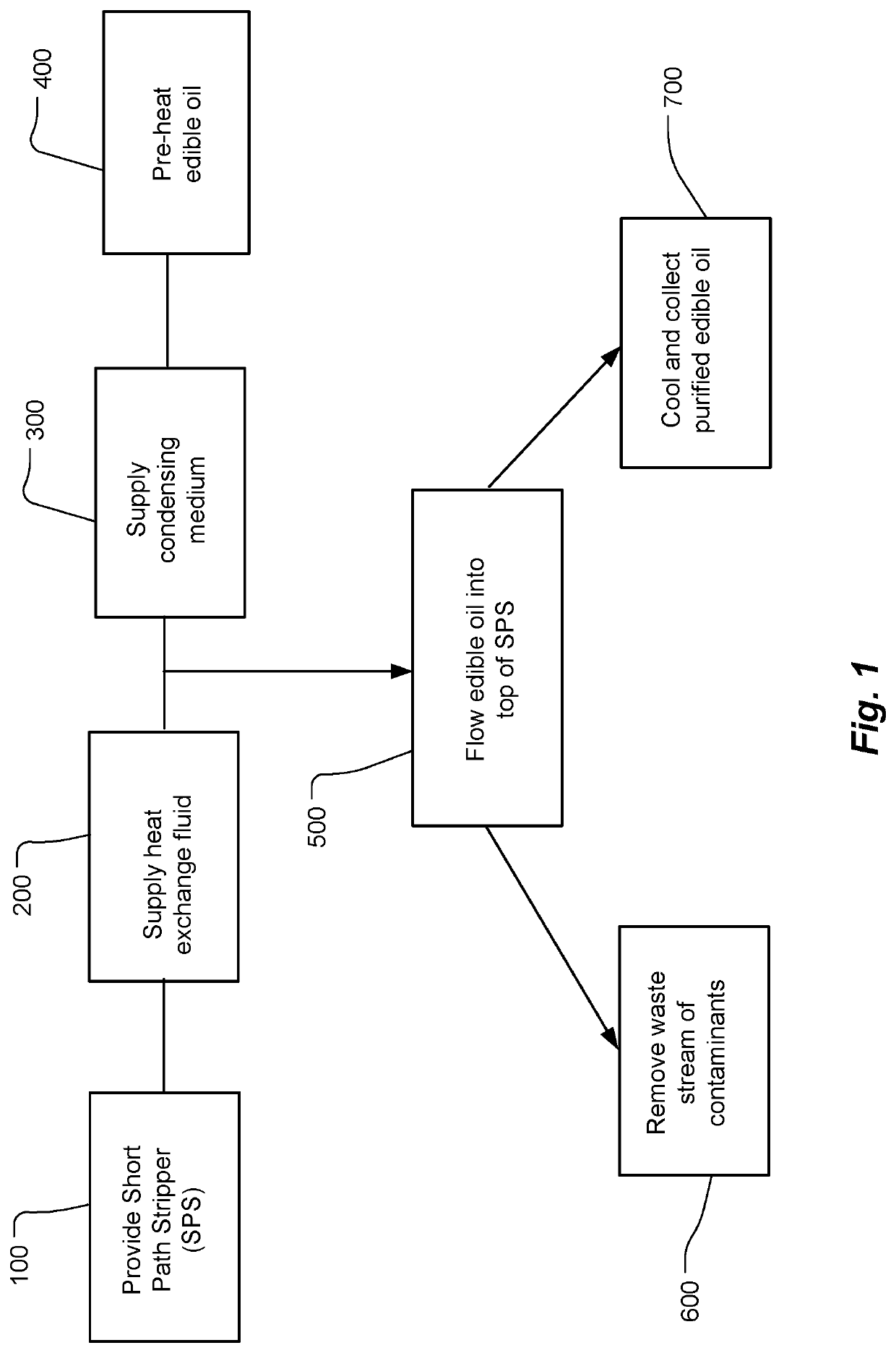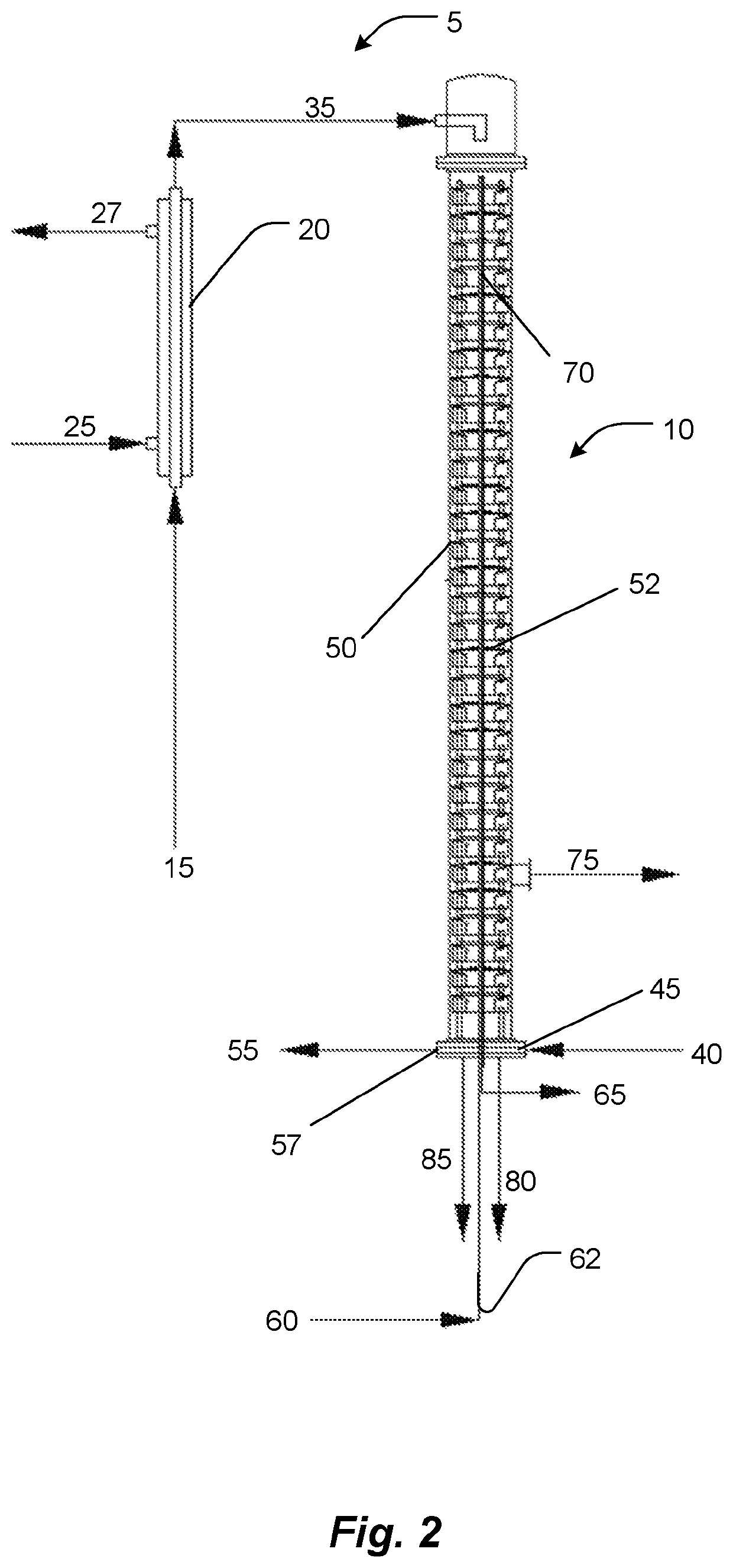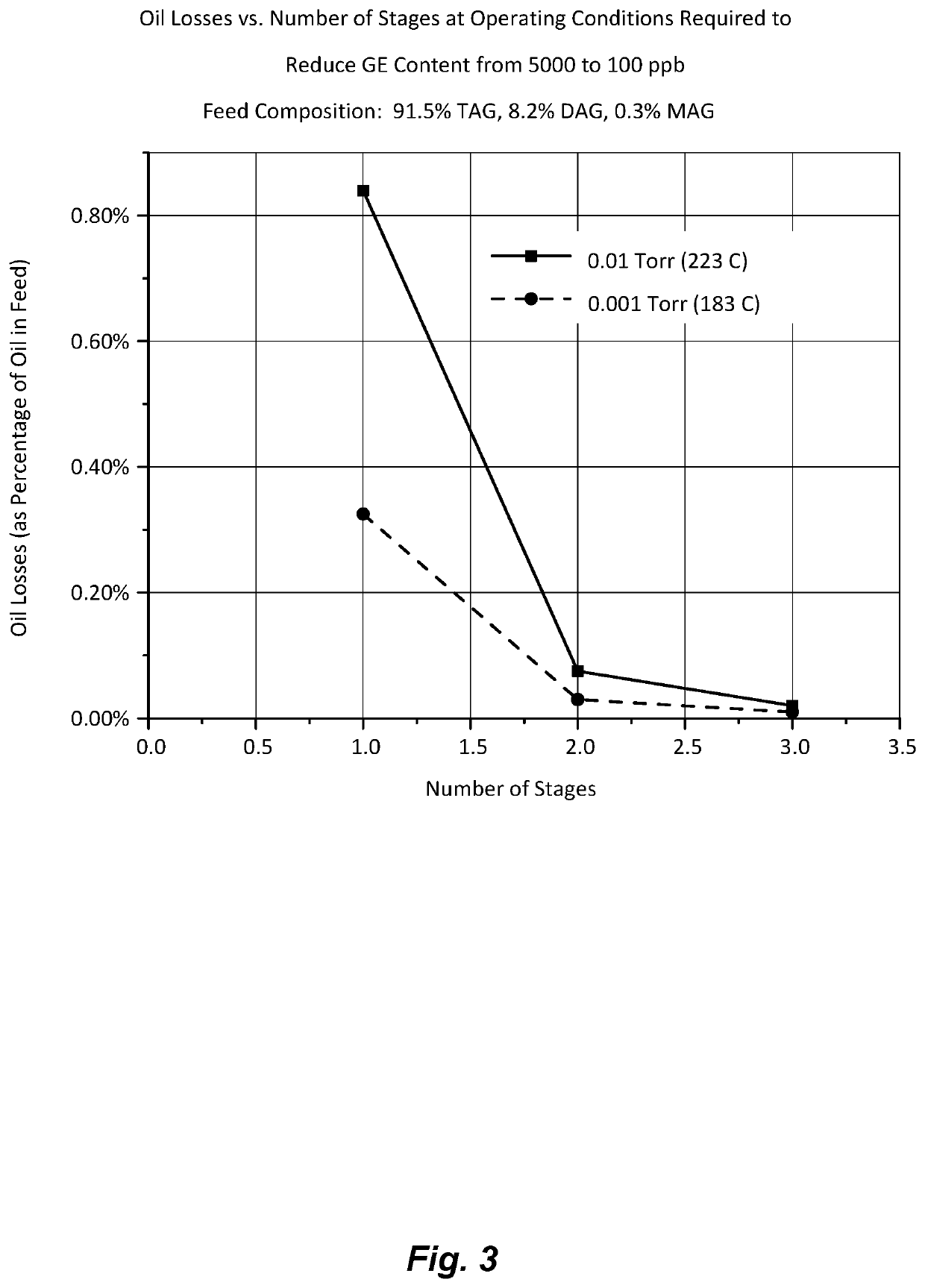Stripping process for reduction of GEs and 3-MCPD esters from edible oils
a technology of edible oils and stripping process, which is applied in the direction of separation process, fatty-oil/fat refining, vacuum distillation separation, etc., can solve the problem that edible oils are not suitable for human consumption
- Summary
- Abstract
- Description
- Claims
- Application Information
AI Technical Summary
Benefits of technology
Problems solved by technology
Method used
Image
Examples
example
[0076]Computer simulations were performed using ChemCad to evaluate the benefits of using multi-stage short path stripping versus a conventional short path evaporator to remove glycidyl esters and free 3-MCPD from palm oil. Note that conventional short path evaporators can only provide a single equilibrium stage, while the multi-staged short path stripping can provide two, three or more separation stages. The feed stream composition was specified as 91.5 wt % triacylglyceride (TAG), 8.2 wt % diacylglyceride (DAG), 0.3% monoacylglyceride (MAG), 5000 ppb glycidyl ester and 5000 ppb free 3-MCPD. A single glycidyl ester with a molar mass of approximately 270 was created using the UNIFAC group contribution method. The conventional short path evaporator was modeled as a flash box with heat input and short path stripping was modeled as an SCDS distillation column with between two and three stages with feed on the top stage. Simulations were run at specified operating pressures of 0.001 Tor...
PUM
| Property | Measurement | Unit |
|---|---|---|
| temperature | aaaaa | aaaaa |
| temperature | aaaaa | aaaaa |
| temperature | aaaaa | aaaaa |
Abstract
Description
Claims
Application Information
 Login to View More
Login to View More - R&D
- Intellectual Property
- Life Sciences
- Materials
- Tech Scout
- Unparalleled Data Quality
- Higher Quality Content
- 60% Fewer Hallucinations
Browse by: Latest US Patents, China's latest patents, Technical Efficacy Thesaurus, Application Domain, Technology Topic, Popular Technical Reports.
© 2025 PatSnap. All rights reserved.Legal|Privacy policy|Modern Slavery Act Transparency Statement|Sitemap|About US| Contact US: help@patsnap.com



